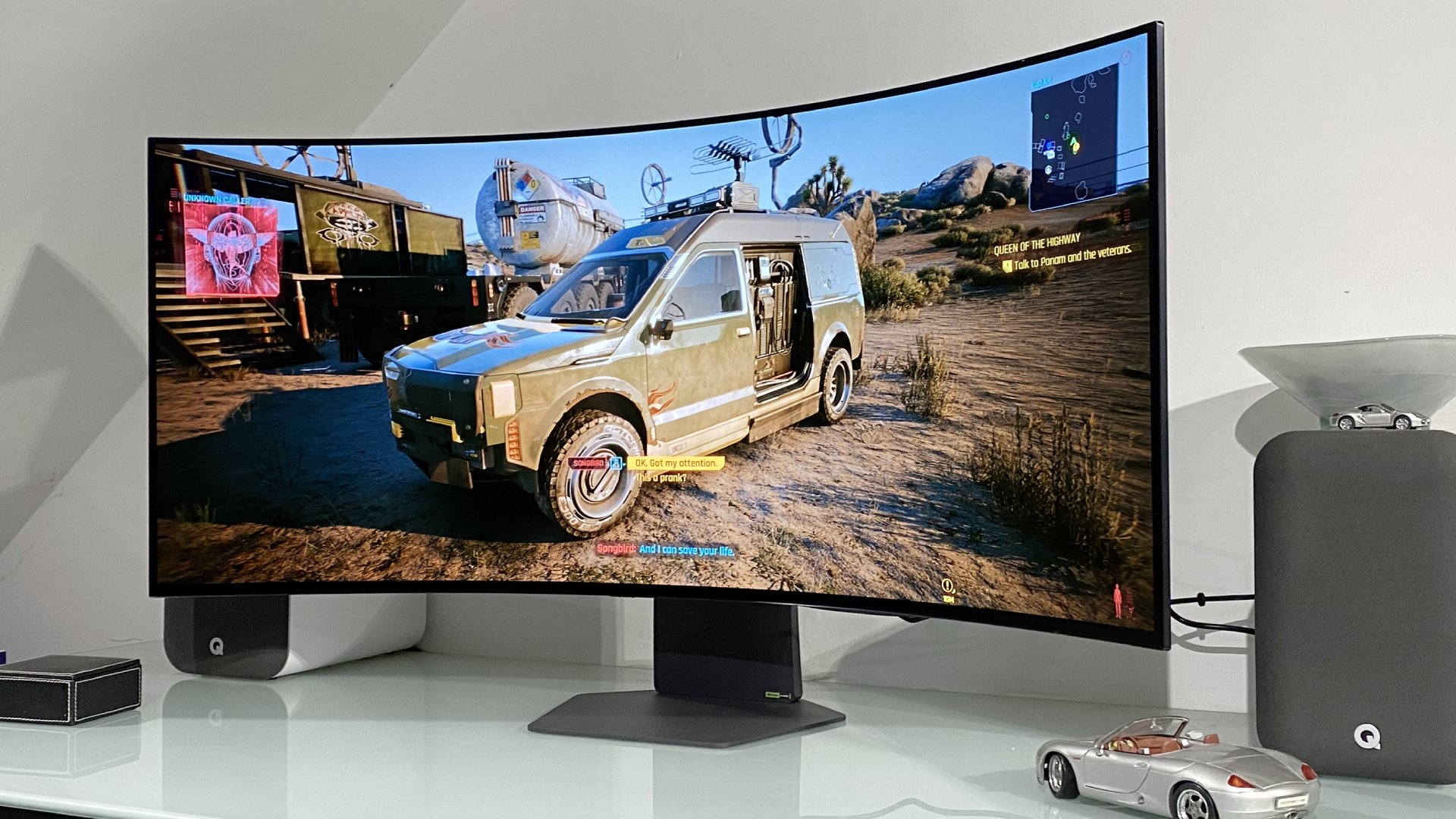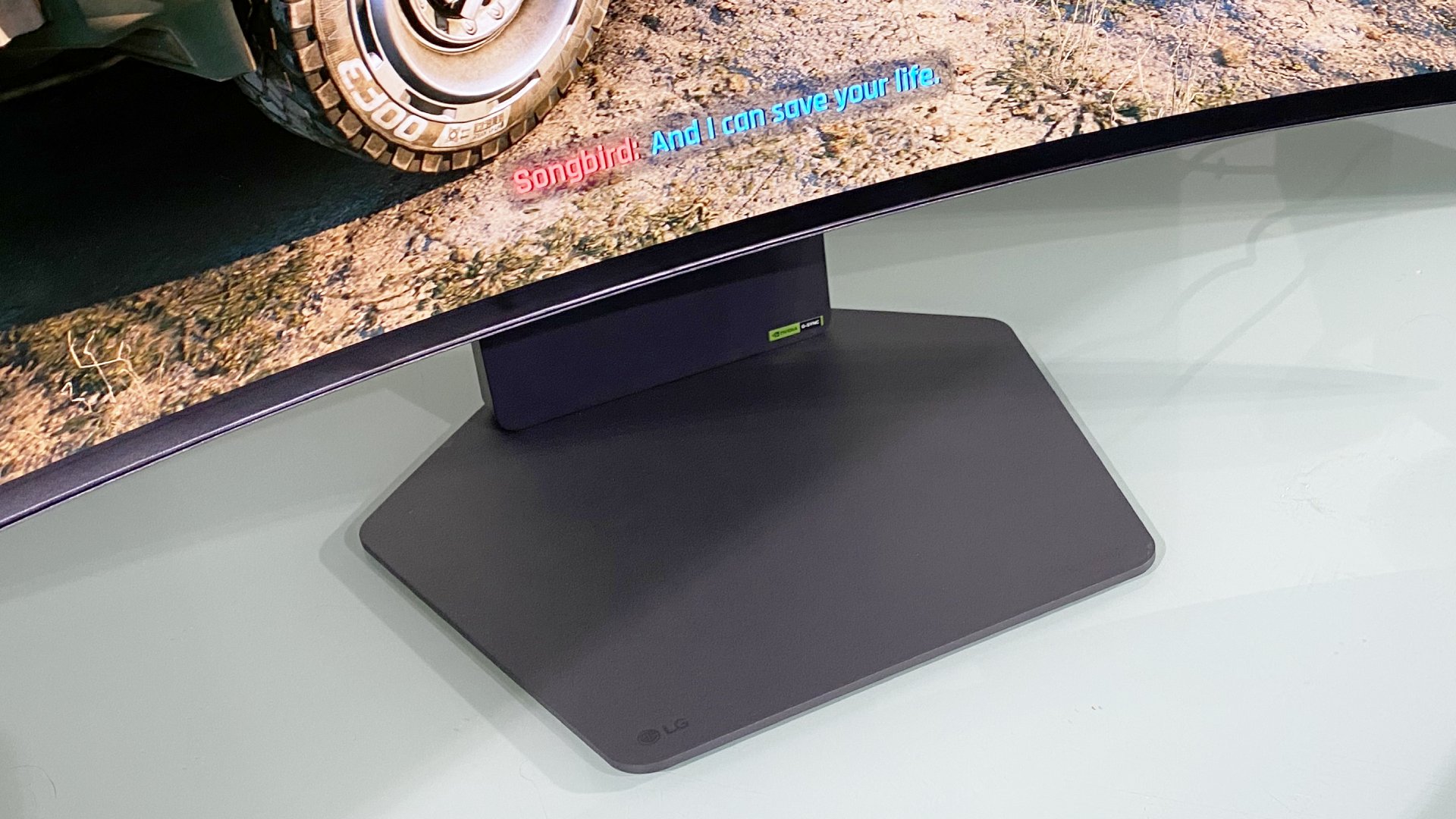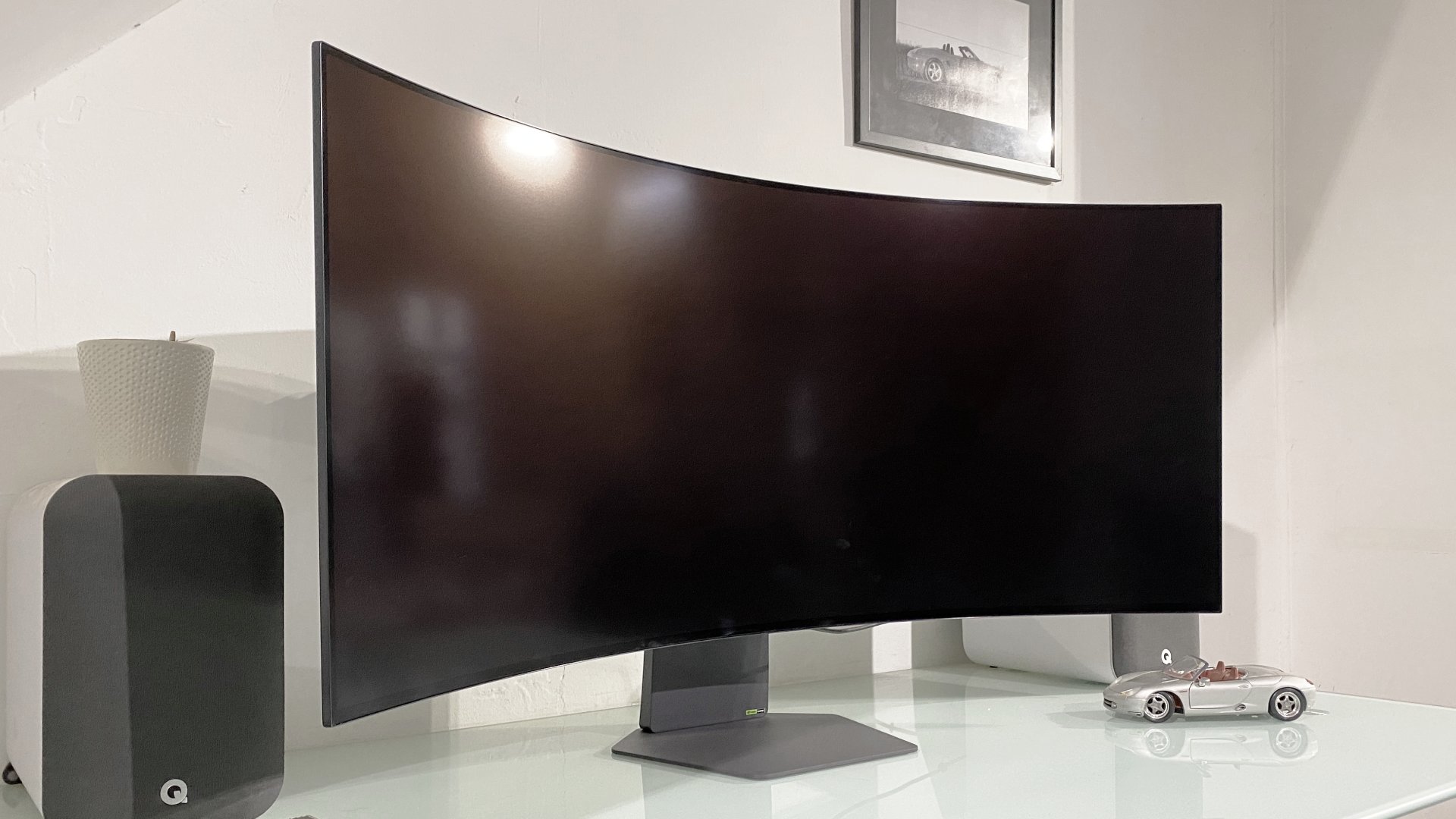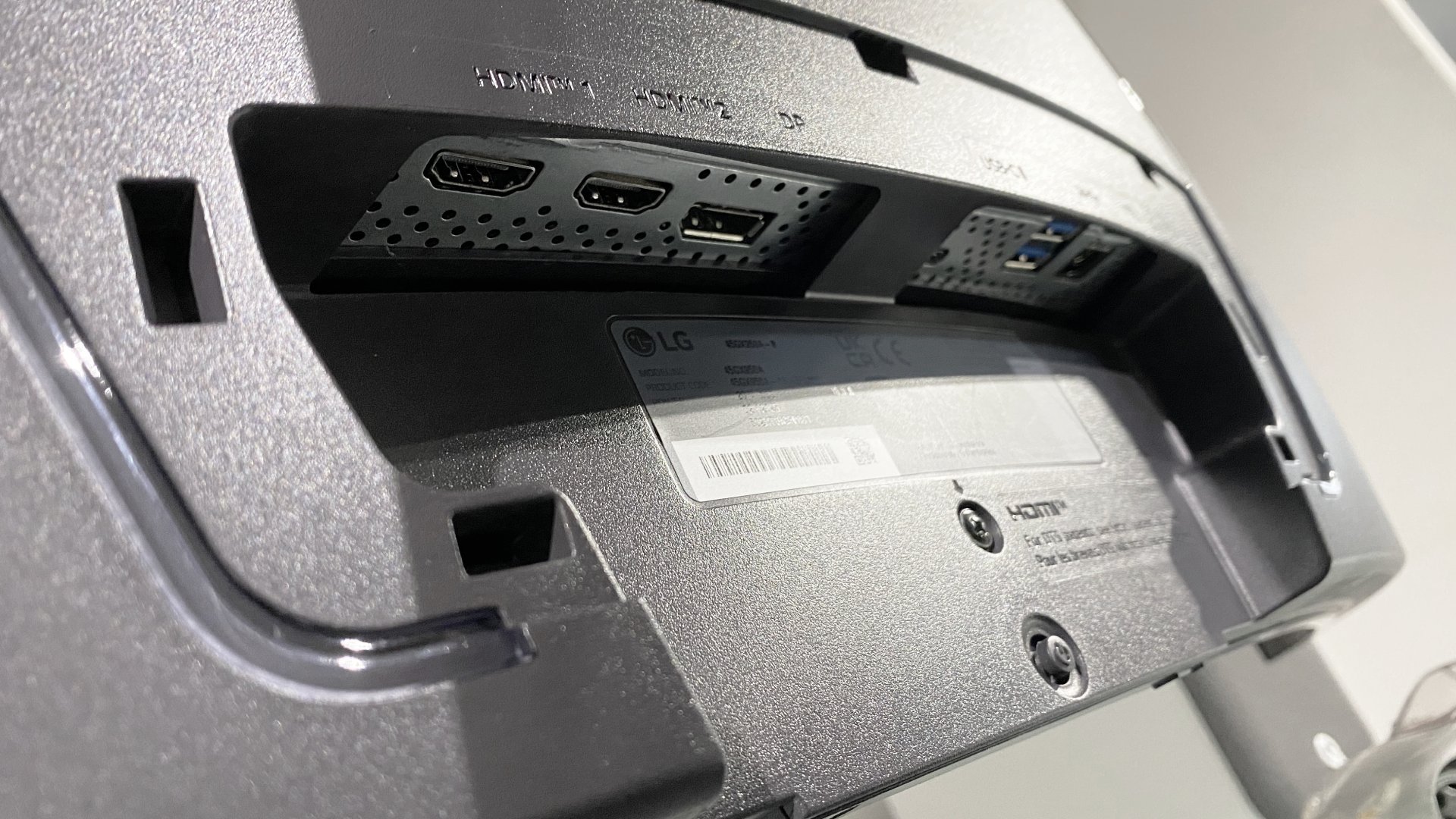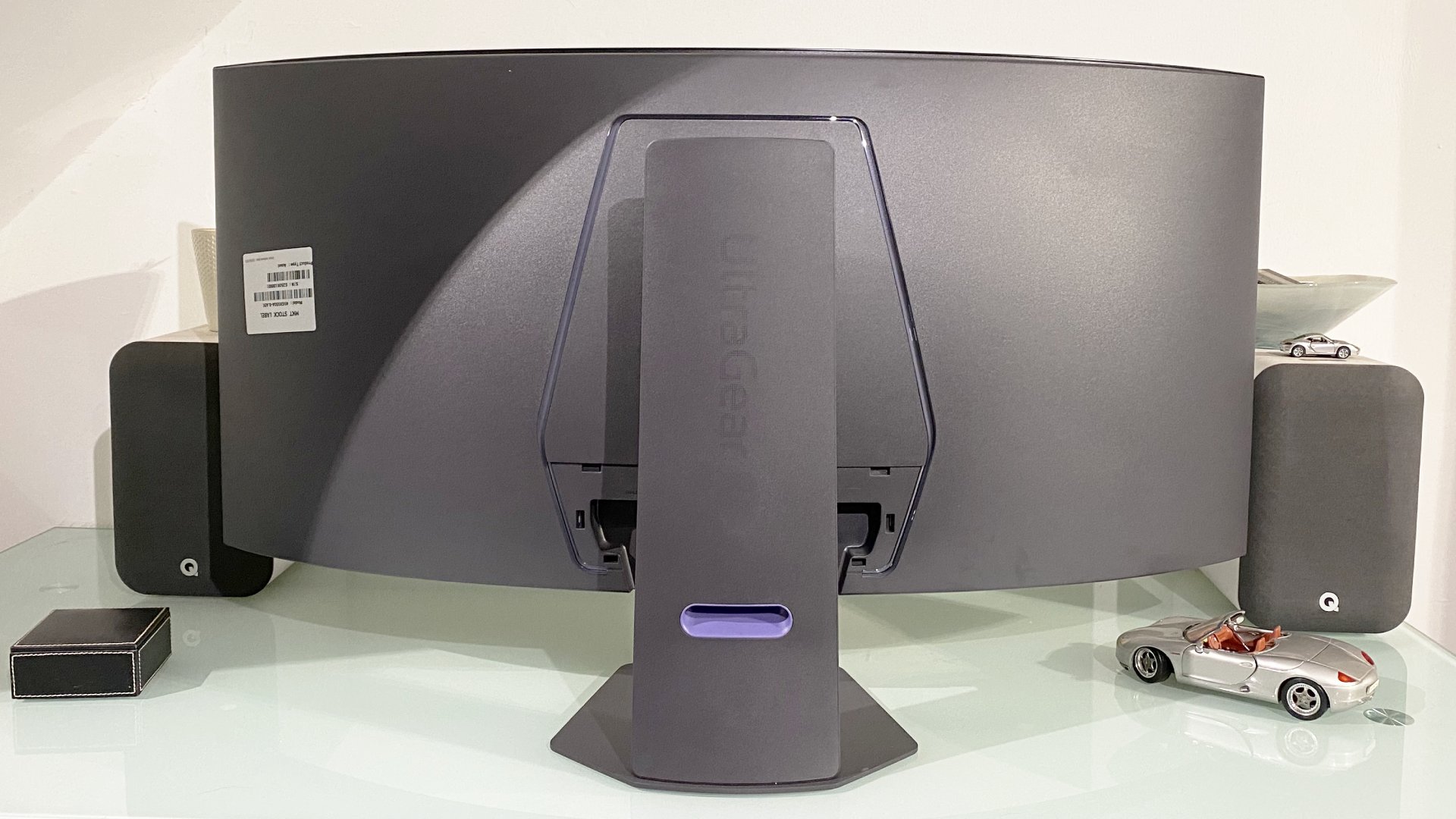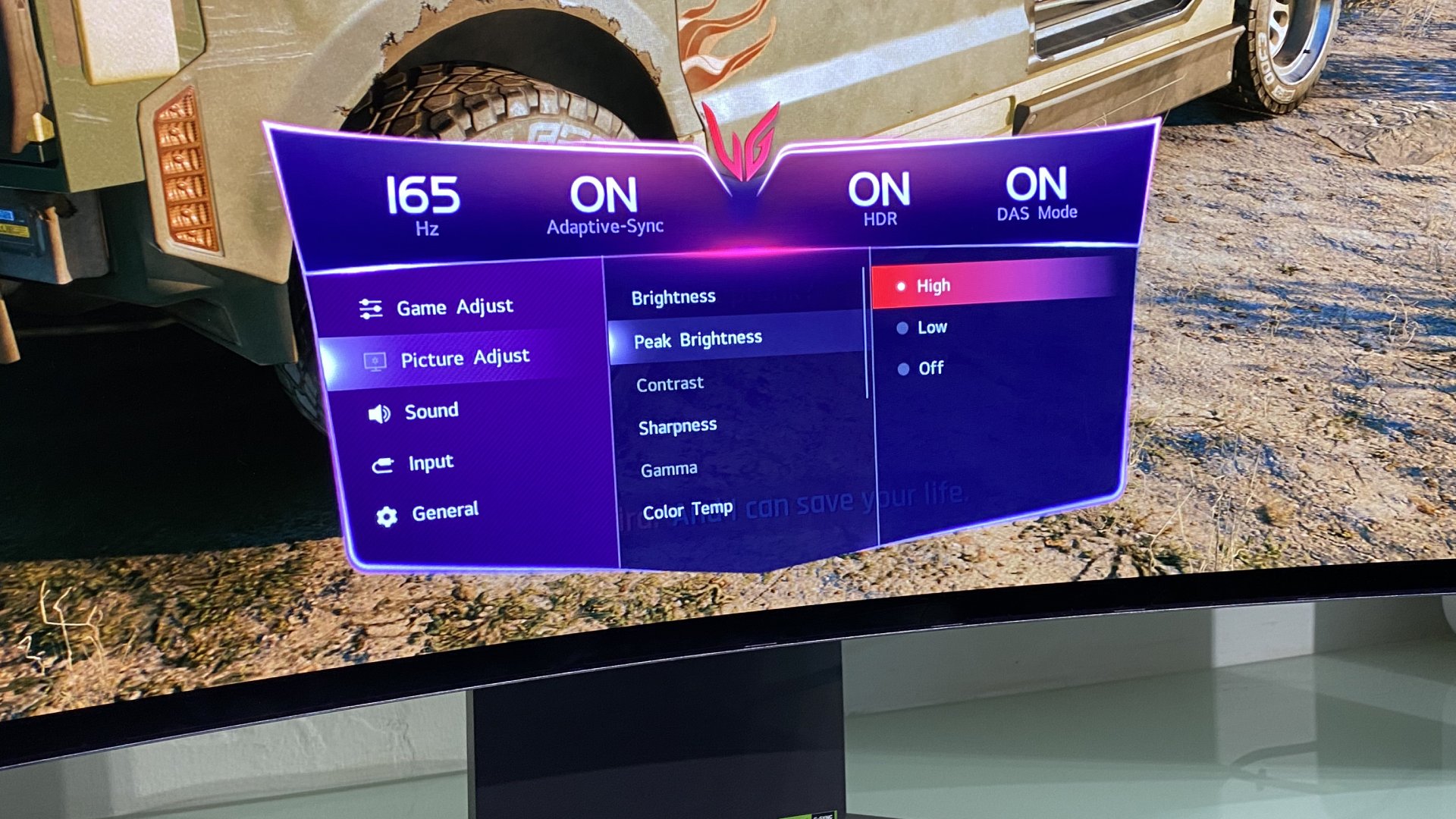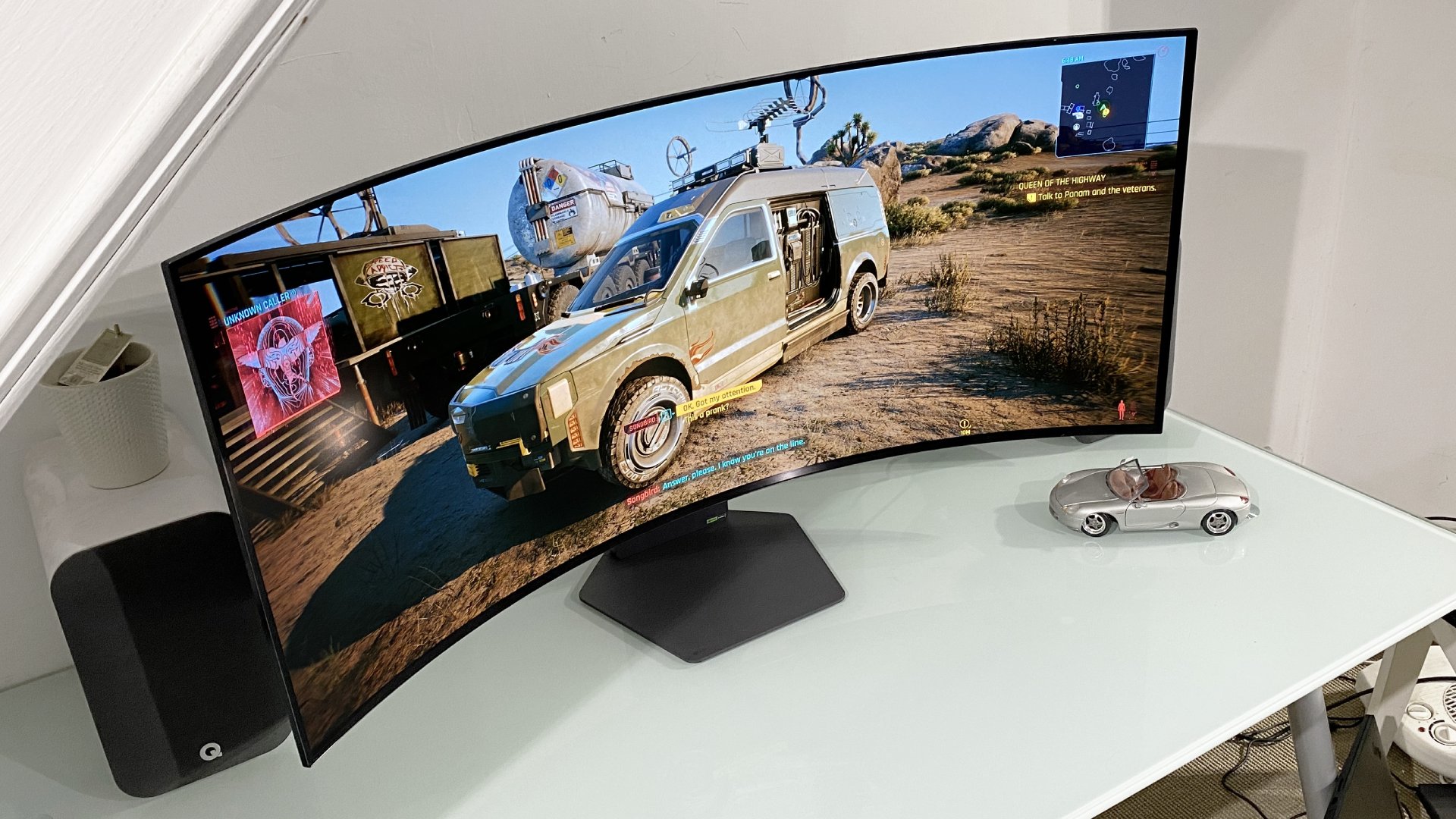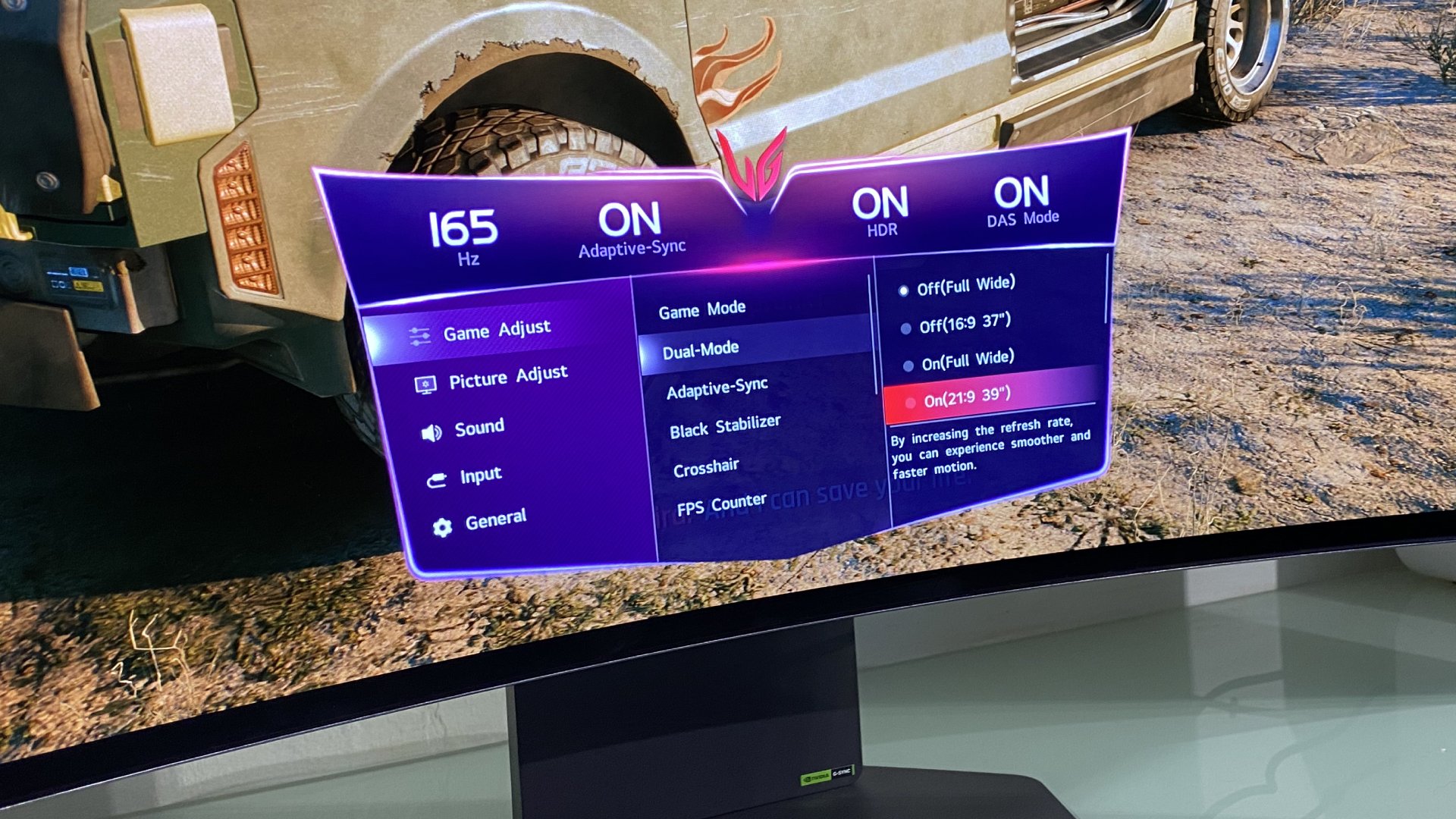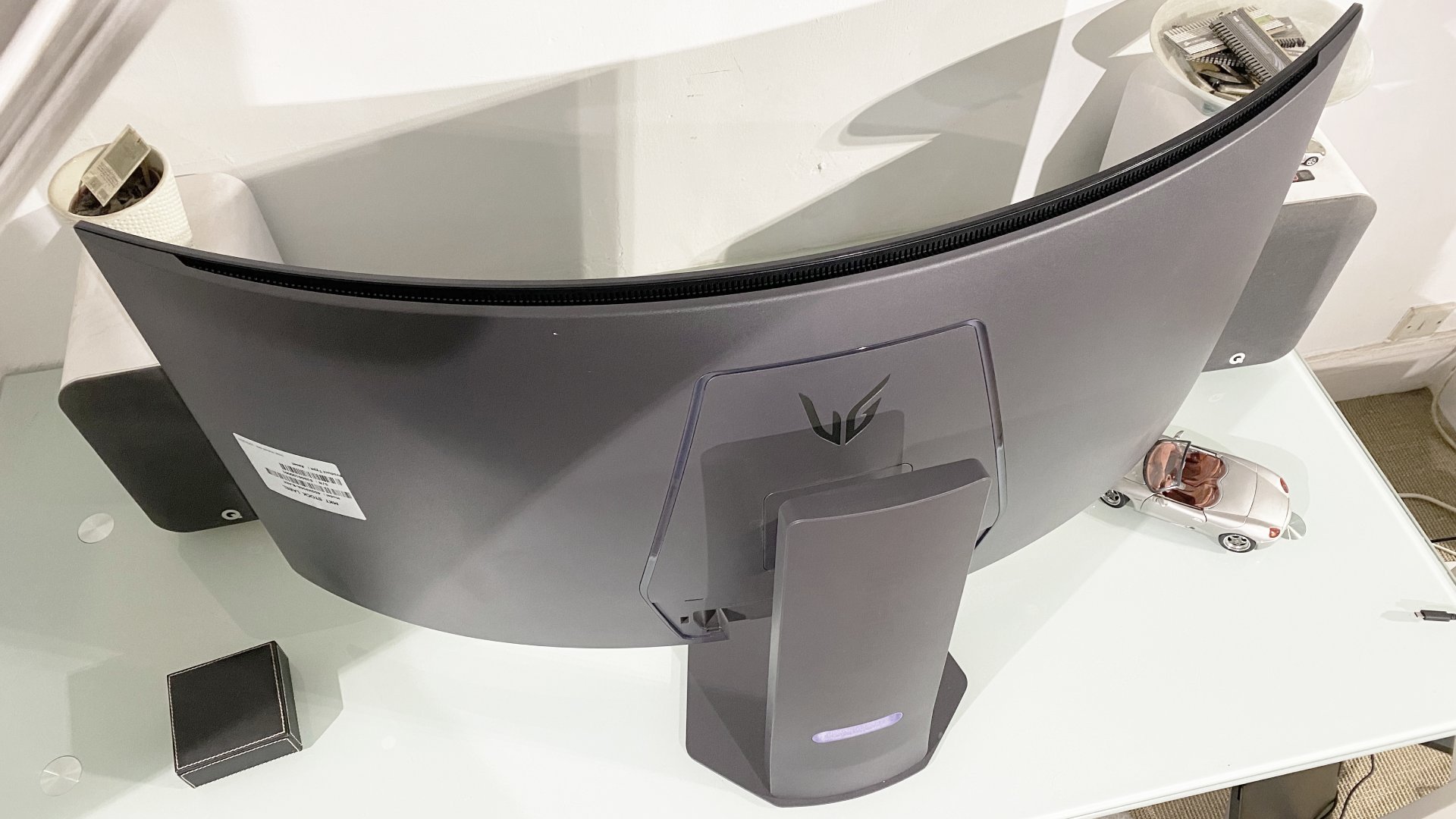LG Ultragear 45GX950A | PC Gamer
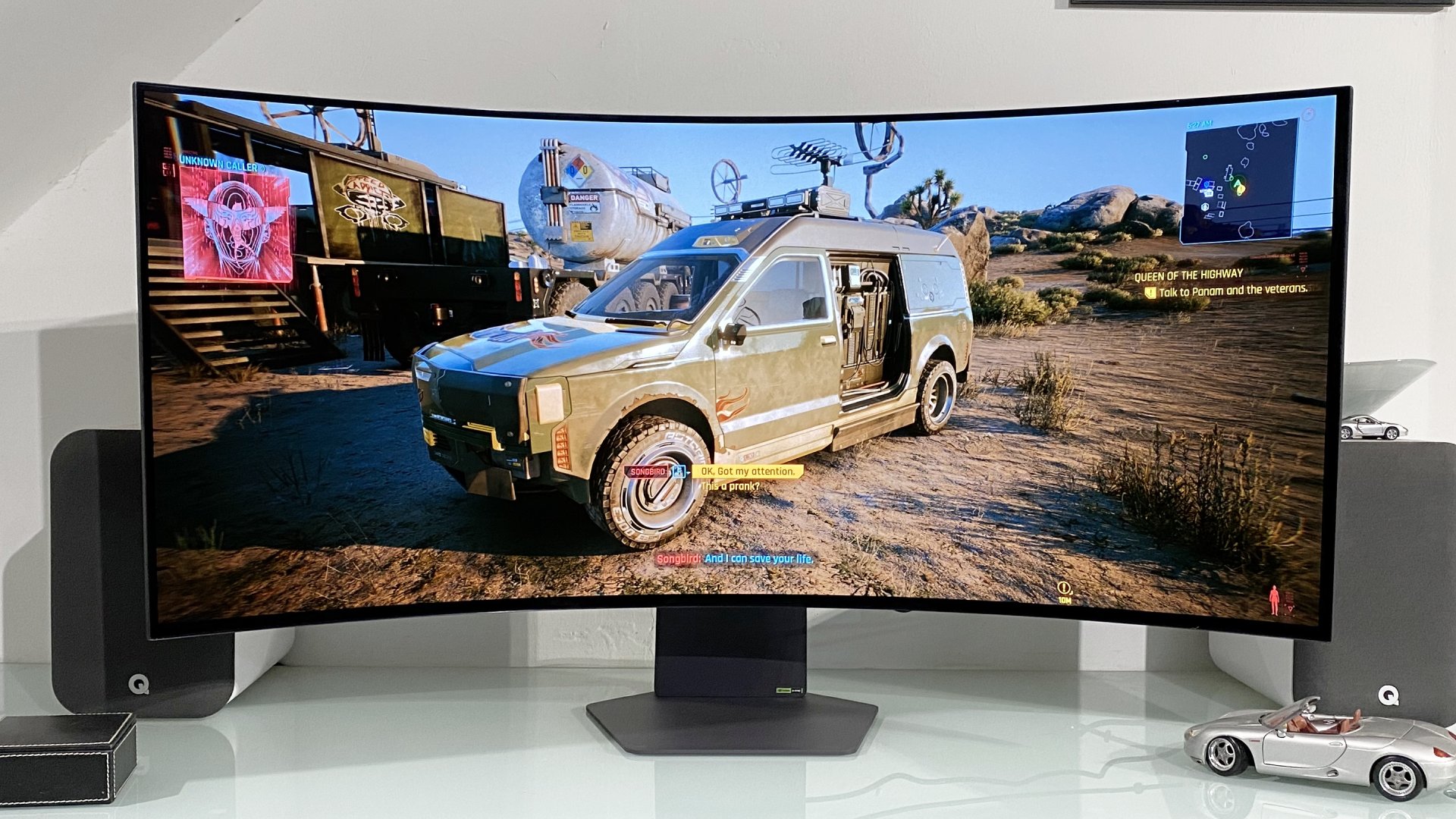
What is the ultimate PC gaming monitor? That’s most definitely a moving target. 10 years ago, for instance, you probably wouldn’t have picked ultra-high refresh rates or OLED panels. That just wasn’t available. But right now? The answer looks an awful lot like the new LG Ultragear 45GX950A. On paper, this thing is stellar.
The basics involve a huge 45-inch OLED panel, specifically an LG WOLED as opposed to Samsung QD-OLED, the latter being essentially the only alternative OLED panel tech available for PC monitors.
We have, of course, seen OLED monitors on precisely this scale before. But the big news here is an upgrade from the usual 3,440 by 1,440 resolution. On a large 45-inch display, that resolution results in disappointingly chunky pixels. But this new LG rocks a 5K2K native resolution of fully 5,120 by 2,160 pixels.
LG Ultragear 45GX950A specs
Screen size: 45-inch
Resolution: 5,120 x 2,160
Brightness: 270 nits full screen, 1,300 nits peak HDR 1.5% APL
Response time: 0.03 ms GtG
Refresh rate: 165 Hz 5K2K, 330 Hz 2,560 x 1,080
HDR: DisplayHDR 400 True Black
Features: WOLED panel, dual-mode, HDMI 2.1 x2, DisplayPort 2.1, USB-C with 90W PD
Price: $1,999 | £1,849
That makes for a substantial improvement in pixel density from about 83 DPI to roughly 124 DPI. For the record, that’s still lower than, say, a 32-inch 4K panel, which works out at 138 DPI, or a 27-inch 4K panel like the new Philips Evnia 27M2N3800A, which clocks in at 163 DPI. Another reference point in terms of DPI are 27-inch 1440p panels and 34-inch ultrawides with the familiar 3,440 by 1,440 native. Both result in 109 DPI. As a final contextual comparator here, the pixel density on offer from this new 45-inch LG is equivalent to a conventional 16:9 4K panel measuring 37 inches.
Anyway, the point here is that this monitor offers a major upgrade in pixel density for such a large display, but it doesn’t quite match the most popular 4K panel sizes in that regard. As for other specs, well, this is an LG WOLED panel, but it’s not the very latest generation, so the full-screen brightness tops out at 275 nits as opposed to the 300 nits-plus that a few of the very latest OLED monitors can achieve.
The headline refresh rate is 165 Hz at the 5K2K native res. However, LG has also included a number of “dual-mode” resolutions with higher refresh rates, including a 2,560 by 1,080 mode with 330 Hz refresh. As ever, the idea is to offer the best of both worlds, combining the detail and image precision of the full native 5K2K with an option to run a lower resolution at high frame rates.
On paper, 2,560 by 1,080 offers the possibility of integer scaling or using precisely four pixels from a high resolution pixel grid in a quadrant formation to act as a single pixel in a lower resolution. But, like the many 4K monitors we’ve tested of late that include 1080p modes, some kind of interpolation is instead being used.
The other major spec detail that’s worth noting is the panel curvature. It’s seriously extreme at 800R. LG is also planning an alternative model based on this panel with mechanically variable curvature courtesy of electric motors. But this one has a fixed 800R curve. And that’s an awful lot of bend.
As for connectivity, you get dual HDMI inputs, plus DisplayPort, USB-C with 90W of power delivery and a two-port USB-A hub. Overall, it’s a strong feature set, as well it should be at this elevated price point. Not checked out the specs box yet? This thing is near two grand.
But what of the viewing and, well, gaming experience? Out of the box and this is instantly a ridiculously imposing display. The combination of the huge 45-inch size with the 21:9 aspect ratio and crazy curvature makes an immediate impact. Factor in the slim, symmetrical bezels on all four sides of the OLED panel and the overall vibe is something along the lines of futuristic movie-prop.
There’s just a lack of immediate ‘wow’ factor.
However, the first impressions of the actual image quality are, it has to be said, a bit of mixed bag. While the pixel density is a clear improvement over a 3,440 by 1,440 resolution 45-inch monitor, it’s also easy enough to see on the Windows desktop that it’s not quite as sharp as a 32-inch or 27-inch 4K monitor.
The overall level of visual pop is also a tiny bit of a disappointment. LG WOLED panels from this generation tend to have a slightly green tinge that’s likewise visible here. Generally, they lack the vibrancy and, subjectively speaking, the colour saturation of otherwise similar monitor models with Samsung QD-OLED panels. That’s the case with this new LG, too. There’s just a lack of an immediate ‘wow’ factor.
The matte panel coating probably contributes to that. But the overall sense of punch and vibrancy, particularly when showing a bright image across the whole screen, is a touch underwhelming. Indeed, the overall experience is very dependent on how much of the panel you’re lighting up.
There’s a Sony OLED demo video on YouTube showing a fireworks display that looks incredible. Thanks to the per-pixel lighting of OLED, there’s a searing precision that no LCD monitor can hope to match. Add in the huge scale of the display, plus the very high resolution, and the experience is exceptional.
On the other hand, play a bright outdoor scene in, say, Cyberpunk 2077 and this monitor looks, well, just a bit dull. The same can happen even on the Windows desktop. Run your PC in dark mode with a dark wallpaper, and this monitor can look fabulous . But as soon as you open up a large bright application window, let’s say a mostly white webpage and the overall image dims appreciably.
You can toggle an ABL or automatic brightness limiter to prevent the dimming, but all that does is make the display dim all the time. This is an age-old OLED shortcoming at this point, but it’s a little more noticeable with this generation of LG OLED technology than a typical monitor with the Samsung QD-OLED alternative.
While we’re on the subject of relative disappointments, you can immediately see on the Windows desktop that the dual-mode functionality very clearly isn’t using integer scaling. The image quality is a little soft and most of the modes look pretty kludgy.
The pixel response blows away any LCD monitor and the full-screen HDR experience when rendering mostly dark game scenes, or indeed movie scenes, is very special indeed.
That said, the 2,560 by, 1,080 330 Hz mode looks reasonable in games and certainly it’s superior in terms of pixel definition compared to using GPU scaling. And you get the added bonus of 330 Hz. But it remains perplexing that, like so many other dual-mode displays, plain old integer scaling isn’t used when the numbers seemingly add up to make it possible.
If all this sounds a bit of a miserable moan, this is still an incredible display. The pixel response blows away any LCD monitor and the full-screen HDR experience when rendering mostly dark game scenes, or indeed movie scenes, is very special indeed. It feels like a sneak peak of the future of PC display.
Buy if…
✅ You want a big OLED with decent pixel density: 27-inch and 32-inch 4K panels are still sharper, but this LG is still a huge advance on previous 45-inch ultrawide OLEDs for pixel density.
Don’t buy if…
❌ You’re expecting a step-change in OLED performance: This “new” LG doesn’t have the very latest panel tech, so full-screen brightness is a touch disappointing.
That’s the thing, however: it is only a sneak peak. The limitations around full-screen brightness see to that, and that’s not even accounting for worries over OLED burn in. In our experience and that of most third-part assessments, burn-in is proving to be less of a concern that we had previously feared, even for worst case desktop usage.
Purely for gaming, it’s probably not a concern at all, though the 45-inch diagonal and 5K2K resolution are a fantastic combination for both gaming and getting serious work done on the same monitor.
Anyway, the overall conclusion has to be that this is not the ultimate gaming monitor you’ve been waiting for. It’s very, very good by most metrics. But the full-screen brightness remains a significant limitation and if you’re a sucker for super-tight pixel density, that aspect slightly disappoints, too. That doesn’t make the LG Ultragear 45GX950A unbuyable, but you do get the feeling it’s going to be rapidly overtaken by upgraded OLED technology in the very near future. And that’s a pretty uncomfortable thought when you’re paying this much.
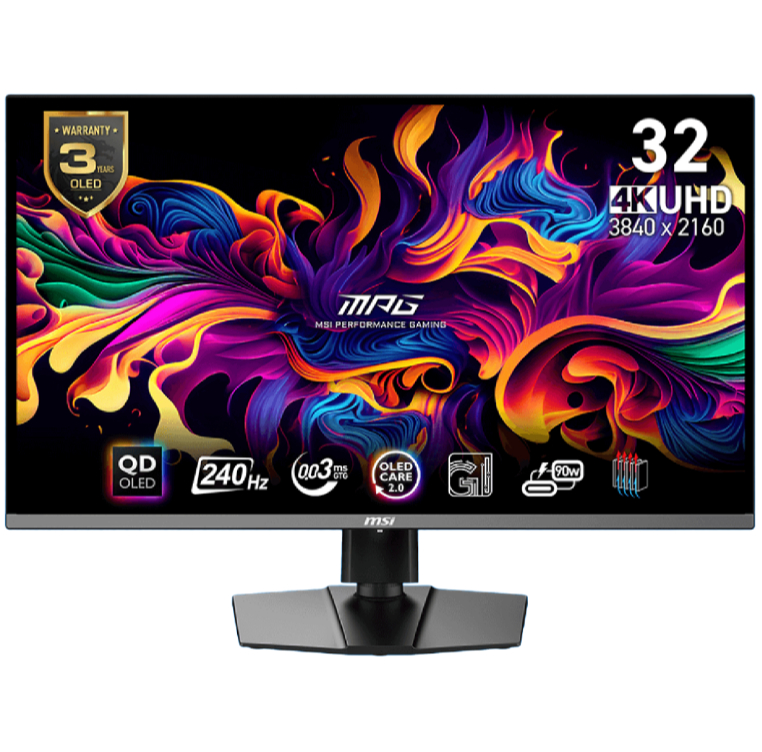
Best gaming monitors 2025

